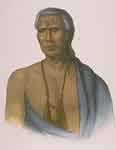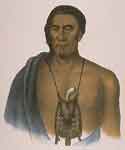
![]()
GRANDFATHERS
Russian
Names
Location
Sub-Tribes
History
Household
Religion and Music
Arms
Clothing
Moccasines
Bags
The name is derived from that of Delaware River, which in turn, was named for Lord Delaware, second governor of Virginia
Other names:
Abnaki (Wabanaki)-
"Easterners" from their position relative to many other Algonquian tribes (To not confuse them with Abnaki in Maine).
A-ko-tca-ka'nea - "One who stammers in his speech", the Mohawk name. The Oneida and Tuscarora names were similar.
Delua (Delaas) - in Spanish Texas.
Anakwanoki - Cherokee name, an attempt at Wabanaki.
Lenni Lenape (their own name), meaning "true men", or "standard men"("original people").
Loup - "wolf", so called by the French.
Mattawa (Matha, Mathwa) - Nanticoke name.
Mochomes - "grandfather", name given by those Algonquian tribes which claimed descent from them.
Nar-wah-ro - Wichita name.
Renni Renape, - a form of Lenni Lenape
Tca-ka'-nea - shortened form of Mohawk name given above.
(The names in the languages of the other four Iroquois tribes are about the same).
Munsee - "people of the stoney country" (Minassiniu, Minisink, Minsi, Moncy, Monthey, Mundook, Muncey, Munsi, Muncie)
In the cultural attitude Mansi stood separately and about the last century were considered frequently as an independent tribe. The term occurs in sources in 18 century.
Four of the Munsee tribes were sometimes known collectively as the Esopus (Espachomy): Catskill, Mamekoting, Waranawonkong, and Wawarsink.
Unami (Wename)- "people down river".
For the first time this term has appeared in 1757 and occured before final resettlement to Oklahoma.
Under some versions this division is Nantikok, on anothers Unalachtigo and Nantikok are very close on culture and have the common origin. Very much have early merged with Unami.
Eriwopec (Armewamese, Armewamex, Erinonec, Ermamex), Neshamini, Okahoki (Okehocking, Okanickon), Passayunk (Passajung), Shackamaxon, Yacomanshaghking.

It is one of three Penn-Wampums

It is other Penn-Wampum
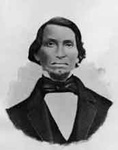
Chief Charles Journeycake, wearing cropped hair, vest, jacket and neck scarf tie (between 1940 and 1960?)
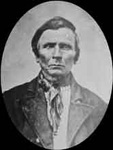
Black Beaver, a Delaware Indian scout who had volunteered his services to the Union.
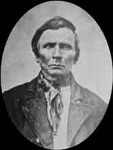
Black Beaver, wearing short cropped hair, sack jacket and neck scarf (between 1865 and 1880?).

A news artist's depiction of Captain
Falleaf's Delaware Company in the
camp of James H. Lane in the
fall of 1861.
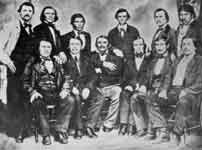
Delaware Indian leaders who participated in negotians in Washington, D.C., in 1867. Seated, left to right: James Ketchum, James Conner (Principal Chief), Charles Journeycake, Isaac Journeycake, John Sarcoxie, Sr. Standing left to right: James McDaniel, a Cherokee present at discussions, Black Beaver, Henry Tiblow, interpreter, John G. Pratt, the U.S. Indian Agent, Charles Armstrong, and John Young.
nd7people@hotmail.com

| Reconstruction of the Delaware's head-dress, 17 century. |
| Angry colonists known as the Paxton Boys murdered peaceful Indians in Harrisburg, Pennsylvania, in 1763. They attacked the Indians in retaliation for the killing of settlers by the Delawares. |
| about 1800 |
| Graphite on paper 8-1/16 x 13-3/16" (20,5 x 33,5 cm) signed l.r. in image: "H.B.Mollhausen"l u.r.: "No. 32" l.c.: "Old Fort Arbuckle now / a settlement of Delaware Indians under / the command of Capt. Black Beaver. / Near Camp 21 P. R. Exploration / Aug. 19th 1853." |

| Delaware Indians as shown in "Scouts for the National Army in the West," by Henry Lovie inFrank Leslie's Illustrated, Dec. 6, 1862. Before the war, the Delaware were used as skilled guides and scouts for westward wagon trains, for scientific explorations of the West and in the Rocky Mountain fur trade. |

